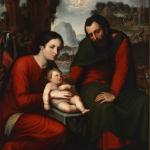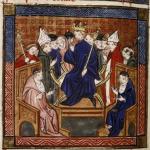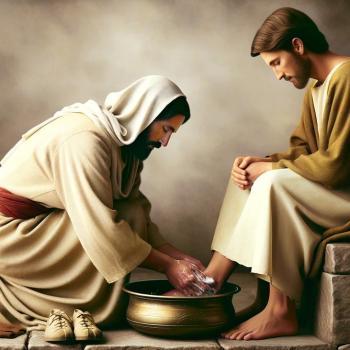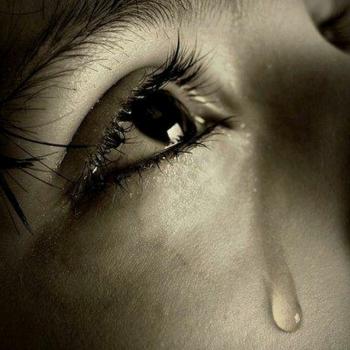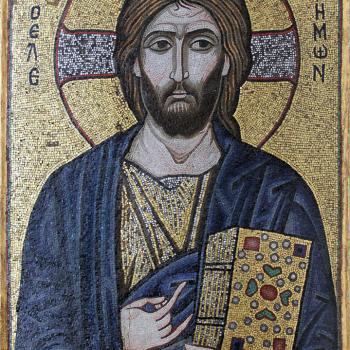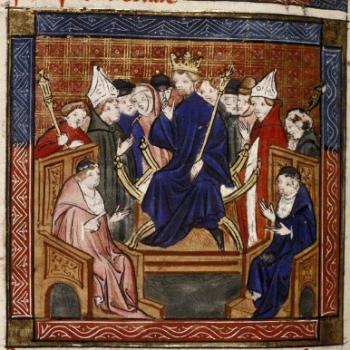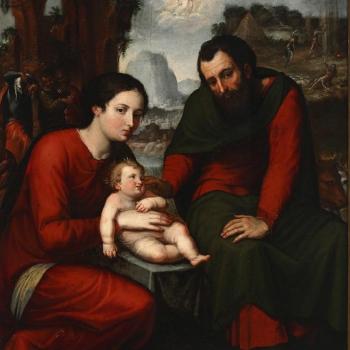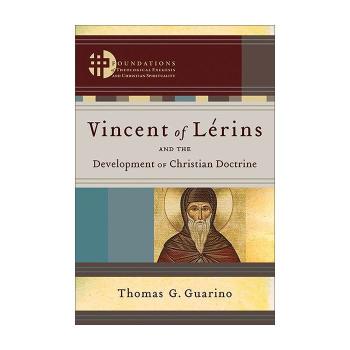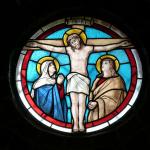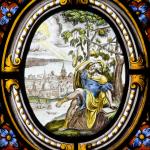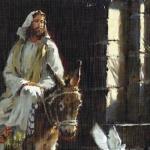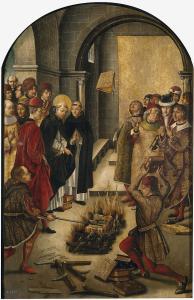
So, I was listening to another debate. This one was called Catholicism meets Calvary Chapel, and it involved a Catholic apologist/ evangelist duo squaring off against two opponents associated with Calvary Chapel, Costa Mesa. On the Catholic side, the participants were Tim Staples and Jesse Romero. On the Calvary Chapel side, the names I was able to make out out were Bill Wynne and Rob Yardley.[1] I only caught the first part of it on YouTube, but what I did hear gave me an idea for a series of posts (at least three). I have since ordered the whole debate, which I plan on listening to over the weeks to come. But this series isn’t really about the debate per se. Rather, it’s about a few historical topics brought up during the event that were more peripheral to what was being discussed, soteriology. So, the debate is not a prerequisite.
The question we are really after is in this first post is: What is the nature of what is commonly referred to as Catharism? Is it Christian? The topic came up rather organically during the debate. In the context of the broader soteriological discussion, the Catholic camp was implying that their opponent’s view on salvation was an inheritance from Martin Luther and the Reformation. Rob Yardley from Calvary Chapel rebutted that his theology was not dependent on Luther, and was rather that found in the New Testament. He then made the following comments starting at 13:35 (my transcription):
“As you know there were millions of Christians who lived in the centuries outside [of] the Catholic Church between the time of Jesus Christ and the time of the Reformation. The Reformation applied to the Catholic Church, but the Reformers retained much of what’s in Catholicism today…. Our contention would be that the Vaudois and the Albigenses, there were a number of groups that lived outside of the Roman Catholic Church, did not answer to the Roman pontiff or to any other authority other than the Word of God [i.e. Sola Scriptura] for their position”.
This caught my attention. Yardley mentions two groups here that he says were outside of the Catholic fold, and utilized the principle of Sola Scriptura: the Vaudois and the Albigenses. Both groups are associated with the high Middle Ages, and are geographically linked to France. The first sect, known to English readers as the Waldenses, originated in the late 12th century with Peter Waldo (d. 1205). This group in particular seems to have held to a principle that at the very least approximates Sola Scriptura (a view associated with the Protestant Reformation).
But like the Reformers, the Waldenses came from within the Catholic Church, and their founder Peter Waldo did indeed answer to the Catholic hierarchy at some point, at least before becoming the founder of a new sect.[2] What Yardley seems to be arguing implicitly is a view of Church History in the vein of Baptist successionism. Tim Staples seems to have understood him similarly, because minutes later he responds: “To say that the Albigensians are some sort of link in true Christians, they were gnostic heretics….” (21:20). Yardley shot back, “that’s a Catholic lie, Tim….”
Catharism and Christianity
To begin, the terms Cathar and Albigensian are synonymous. Generally speaking, historians have understood the Cathars to be more or less what Tim referred to them as; “gnostic heretics”. [3] Similarly, in his Manual for Inquisitors Bernard Gui (d. A.D. 1331) referred to them as “Manichean heretics”, before giving a brief synopsis of their beliefs.[4] The heresy itself is often associated with the Albigensian Crusade. By the thirteenth century the targets of the maturing crusading movement had expanded to include heretics, pagans, and even political opponents of the papacy. The targets of this particular crusade were the heretics and their Catholic protectors.
The Cathars/Albigenses of the Languedoc region in the South of France ultimately drew the ire of the papacy. They had entrenched themselves within the nobility there, facilitated by the fact that it was largely independent of the Capetian monarch to the North. Initially, the Church’s response of preaching, and public debating seemed to make little headway in rolling back the heresy, and the conventional wisdom was that force was needed. After the papal legate to the region was assassinated,—apparently on the orders of Count Raymond VI of Toulouse (a protector of heretics)— Pope Innocent III issued the indulgence for what became known as the Albigensian Crusade (ca. A.D. 1209-1229).
Some omissions aside for brevity’s sake, this is more or less how the origins of the Albigensian Crusade is presented in standard survey works on the subject of the Crusades, such as the late Jonathan Riley-Smith’s The Crusades: A History (2005), or Thomas Madden’s The Concise History of the Crusades. Both authors are well known Crusade historians, and both are/were university professors. Both were recommended reading on a syllabus in a colloquium on the Crusades I took at a secular university. Both present Catharism as a [non-Christian,] dualistic religion.[5] Both happen to be Catholics.
Additionally, both scholars above have influenced the historiography of the Crusades, are peer reviewed, have reputations to uphold, and are top notch. Madden also was a contributor to the Encyclopedia Brittanica’s entry on the Albigensian Crusade (hardly a pro-Catholic source). Nevertheless, since the very notion that Catharism was a non-Christian dualistic religion has been called “a Catholic lie”, we will look elsewhere for a basic understanding of this medieval heresy.
“Catharism was the greatest heretical challenge faced by the Catholic Church in the twelfth and thirteenth centuries”.[6] Thus reads the first line of Malcolm Barber’s work, The Cathars: Dualist Heretics in Languedoc in the High Middle Ages. He notes that the common view is that it was transplanted from the East in the form of Bogomilism, though some like R. I. Moore believe that it was a home grown dualism.[7] That it was a form of dualism is a given throughout the first chapter on the topic of the origins/ pedigree of Catharism.[8]
Like Madden and Riley-Smith, Barber affirms that the Cathars [aka Albigenses] denied the Incarnation of Jesus Christ, and that they had a rite known as consolamentum. After receiving this rite, the mere “believer” became one of the initiated (perfecti), and it was often delayed until just before death.[9] Like his discussion on the pedigree of Catharism in the first chapter, he includes a robust discussion of Cathar beliefs and practices in the third chapter. The evidence discussed there contradicts any notion of the Cathars/Albigenses being akin to modern day Evangelicals, as Yardley’s position seems to imply.
Though I don’t suspect that Mark Pegg would endorse Baptist successionism, he is nevertheless a historian who might possibly be coopted by its proponents. One major argument in his book A Most Holy War: The Albigensian Crusade and the Battle for Christendom is that “a very distinct Christian culture…was accused of being heretical by the Catholic Church”.[10] He called for a revision of Christian history, arguing that “The Albigensian Crusade…was not a martial pilgrimage against a discrete religion with an organized heretical ‘Church’”.[11]
A survey of three reviews published about Pegg’s book shows that they were overwhelmingly critical regarding this particular aspect of it. One reviewer said that it was against “academic consensus”, and that the evidence presented failed to convince with respect to the historical revision.[12] While too mentioning that the scholarship is stacked against Pegg, another reviewer was also critical of his “dismissal of so many primary sources that support a Cathar church because he constantly suspects orthodox intent”.[13] Of the three reviews, it was the one in the Catholic academic journal which was arguably most sympathetic on the topic of Catharism, but even there the reviewer acknowledges that Pegg is contradicting notable scholars on this topic.[14]
For Barber, Cathar sources take a primacy when reconstructing Catharism, but “even orthodox [i.e. Catholic] attacks on Cathar belief are important since they were particularly concerned to define it accurately in order to give weight to their refutations”.[15] He posits a “moderate dualism” extant in the West up until a Cathar Council at St Félix de Caraman (ca. 1167) attended by envoys from the Bogomil Church in Constantinople changed the religious landscape to one dominated by “absolute dualism”. The Charter of Niquinta which emanated from that Cathar gathering seems to be a main component of his argument.[16]
Ultimately, Barber says, it was this absolute dualism that really drew negative attention from the Catholic hierarchy.[17] Though he argues that there were already established Cathar bishops in places like Albi [hence “Albigensian”] in the South of France, after the Council at St Félix de Caraman there would be a network of sixteen dioceses stretching from Tuolouse to Constantinople.[18] It is generally said that the Inquisition was the tool that the Catholic Church (in concert with the secular authorities) utilized to ultimately vanquish the heresy. Barber posits that both the moderate and absolute varieties of it may have survived up until the end of the fourteenth century.[19]
Whatever the case may be, Staples was certainly correct when he rejected the notion that, as he paraphrased Yardley), “the Albigensians are some sort of link in true Christians”. As Barber indicates, almost since the inception of the Reformation, Protestant authors have been concerned with establishing some basis for historical continuity in response to the charges of novelty coming from their Catholic opponents. Evidently, the first to attempt to link Protestantism with Catharism in a direct line was Jean-Paul Perrin, who in his work Histoire de Vaudois (1618), erroneously conflated the Cathars with the Waldenses [as the title indicates].
This Protestant affinity for the Cathars would sour a little over a century later. All of this and more Barber observes in his historiography.[20] Still, there are those in modern times who try to link Protestantism and Catharism. The position argued by Pegg, and seemingly by others more recently, is very different from the apparent Baptist successionism (or something in that vein) argued by Yardley. Moreover, the academic/ historiographical argument against the traditional understanding would seem to beg the question of how exactly to define “Christian”, and who has the authority to determine that?
Thanks for reading! Please consider leaving a comment below, reacting, or sharing this post.
[1] My apologies if I got either of the names/spellings wrong for the Calvary Chapel side. Please reach out if I did and I will be happy to correct.
[2] R. I., Moore, and Jinty Nelson. “The War against Heresy in Medieval Europe.” The Creighton Century, 1907–2007, edited by David Bates et al., DGO-Digital original, 2, University of London Press, 2009, p. 299, JSTOR, http://www.jstor.org/stable/j.ctv13qfvgj.17. Accessed 17 Aug. 2023.
[3] “Catharism-also known as Albigensianism-was a heresy with a pedigree stretching back to the first centuries of Christianity. There were at least two varieties of the heresy, but both were neo-Manicheistic and neo-Gnostic”. Thomas Madden, The Concise History of the Crusades (Lanham: Rowman & Littlefield, 2014), p. 119. “The Church was particularly worried by the increasing numbers of Cathars, the followers of a type of neo-Manichaeism who believed in two principles, or Gods, of the spiritual and material worlds and saw it as their duty to free their souls from the matter in which they were imprisoned”. Jonathan Riley-Smith, The Crusades: A History (New Haven: Yale University Press, 2005), p. 164. See also notes 12-13 below.
[4] In ed. S.J. Allen and Emilie Amt, The Crusades: a Reader (Peterborough: Broadview Press, 2003), pp. 234-236.
[5] Madden, Concise History, pp. 117-120; Riley-Smith, Crusades, 164.
[6] Malcolm Barber, The Cathars: Dualist Heretics in Languedoc in the High Middle Ages (Pearson Education Limited, 2000), 1.
[7] Barber, The Cathars, pp. 1-2, cf. 22-23, 32-33.
[8] Barber, The Cathars, pp. 6-33.
[9] Barber, The Cathars, denial of Incarnation: p. 85, consolamentum: pp. 76-81, postponement of: p. 104.
[10] Mark Gregory Pegg, A Most Holy War: The Albigensian Crusade and the Battle for Christendom (New York: Oxford University Press), 2008, p. xiv.
[11] Pegg, A Most Holy War, p. 191.
[12] Andy King, Medium Ævum, vol. 78, no. 1, 2009, p. 159. JSTOR, https://doi.org/10.2307/43632831. Accessed 17 Aug. 2023.159.
[13] Suzanne Hevelone, Anglican and Episcopal History, vol. 78, no. 3, 2009, p. 330. JSTOR, http://www.jstor.org/stable/42612788. Accessed 17 Aug. 2023.
[14] Laurence W. Marvin, The Catholic Historical Review, vol. 95, no. 4, 2009, p. 801. JSTOR, http://www.jstor.org/stable/27745696. Accessed 17 Aug. 2023.
[15] Barber, The Cathars, p. 81.
[16] Barber, The Cathars, p. 2, cf. pp. 7-8, 71-5). Conversely, Pegg argues that it is a later Cathar forgery (A Most Holy War, pp. 169-170).
[17] Barber, The Cathars, p. 81.
[18] Barber, The Cathars, pp. 73-74.
[19] Barber, The Cathars, p. 20.
[20] Barber, The Cathars, pp. 212-215.


